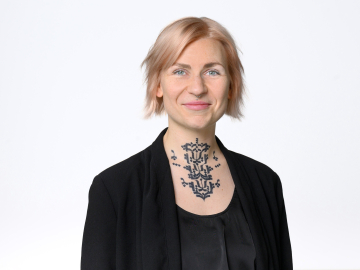ESMT Berlin implements gender equality plan

The EQUAL4EUROPE research project, funded by the European Union, aims to develop equality plans based on empirical findings, which will then be implemented in the participating organizations. Most effective practices are also to be made available to other European educational and research institutions. Public institutions, research organizations, and universities must now be able to present a gender equality plan from 2022 in order to continue to gain access to funding from the European Union research program in the future and thus ensure sustainable institutional change.
The ESMT Gender Equality Plan is effective until December 2025, after which it will be evaluated and modified if necessary. It has been aligned with the goals and principles of ESMT’s strategic development framework and its ASPIRE strategy. The plan focuses primarily on promoting gender equality in academic careers. In addition, measures have been integrated that target inequalities among staff and students and aim to improve gender equality.
The gender equality plan builds upon existing activities. To support diversity and gender equality, ESMT awards full and partial scholarships to women who want to advance their careers. In addition, it offers numerous executive education programs focused on advancing women in leadership positions, such as a highly successful training program to certify female executives for Deutsche Telekom’s supervisory boards. The international business school is committed to a continuous exchange between science, business, and politics to drive the transformation of how equality can be achieved in concrete terms.
“The gender equality plan is the result of a collaborative effort to achieve gender equality at ESMT,” says Monica Perez, affiliate professor of management practice and director of the EQUAL4EUROPE initiative at ESMT. “The overarching vision of the ESMT Gender Equality Plan is to create a working and learning environment where women, men, and gender diverse people can grow, be recognized, and feel a sense of belonging equally.”
The ESMT Gender Equality Plan is structured around three main objectives:
- Embedding gender equality in organizational strategy and culture
- Achieving gender parity among faculty and students and in decision-making bodies
- Integrating gender equality into the transfer and production of knowledge
Among them, the plan has six specific goals:
- Embed gender equality in the current and future policies and actions of the business school
- Increase the percentage of female faculty by at least 3% per year
- Increase the percentage of female students in degree programs by at least 2% per year
- Increase the percentage of women in the three senior governing bodies to 25% and in all other academic and non-academic bodies to 30% by 2023 and to 35 and 45% by 2025, respectively
- Evaluate and integrate the gender dimension into teaching and increase the percentage of publications that incorporate the gender dimension by at least 15% by 2025
- Reduce the risk of victimization through at least three measures to raise awareness of sexual harassment and other forms of gender-based violence
“By participating in the EQUAL4EUROPE project, we have evaluated gender equality at ESMT and identified the areas where we will take targeted action,” says Jörg Rocholl, president of ESMT. “With this plan as a guide, we will make even better use of the potential, qualities, and talents of the ESMT community in the coming years.”
About ESMT Berlin
Quick links
